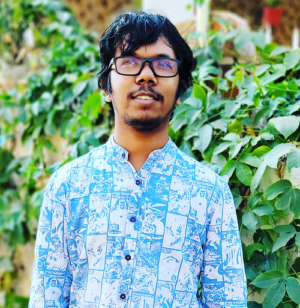
Sanatan Dharma, often referred to as Hinduism, is one of the world’s oldest and most profound spiritual traditions. Rooted in the ancient Indian subcontinent, this belief system offers a rich tapestry of philosophy, rituals, and cultural expressions that have captivated the hearts and minds of millions for millennia. In this blog, we will embark on a journey to explore the essence of Sanatan Dharma, its core principles, and its enduring relevance in the modern world.
- The Meaning of Sanatan Dharma
The term “Sanatan Dharma” translates to “Eternal Religion” or “Eternal Way of Life.” Unlike many organized religions, it doesn’t have a single founder or a universally prescribed set of beliefs. Instead, it encompasses a diverse range of beliefs, practices, and philosophies that have evolved over thousands of years. It is a way of life that seeks to understand the fundamental nature of existence and the relationship between the individual soul (Atman) and the ultimate reality (Brahman).
- Core Beliefs and Concepts
a. Reincarnation and Karma: Central to Sanatan Dharma is the belief in reincarnation, the idea that the soul undergoes a cycle of birth and rebirth until it attains spiritual liberation (Moksha). Karma, the law of cause and effect, determines the course of these lifetimes based on one’s actions.
b. Diverse Deities: Hinduism is known for its myriad gods and goddesses, each representing various aspects of the divine. While some may worship a single deity with devotion (Bhakti), others focus on meditation (Dhyana) or the pursuit of knowledge (Jnana).

c. Yoga and Meditation: Practices like yoga and meditation are integral to Sanatan Dharma. They are tools for self-realization and achieving spiritual growth, harmony, and balance.
- The Four Pursuits of Life (Purusharthas)
Sanatan Dharma recognizes four primary goals in human life, known as the Purusharthas:
a. Dharma (Duty and Righteousness): Living in accordance with one’s duties, responsibilities, and moral values.
b. Artha (Prosperity): Achieving material success and financial stability, but not at the expense of ethical principles.
c. Kama (Desire and Pleasure): Fulfilling legitimate desires and enjoying the pleasures of life, again within the bounds of morality.
d. Moksha (Spiritual Liberation): Ultimately, the highest goal is to attain liberation from the cycle of birth and death, realizing one’s unity with the divine.
- Adaptability and Diversity
/One of the remarkable aspects of Sanatan Dharma is its adaptability and inclusivity. It has absorbed and embraced various cultural influences and philosophies throughout history, resulting in a vast and diverse tradition. From the Vedas and Upanishads to the Bhagavad Gita and the teachings of great sages like Swami Vivekananda, this tradition continually evolves to address contemporary challenges.
- The Relevance Today
/In the modern world, Sanatan Dharma’s teachings remain relevant in various aspects of life. Its emphasis on tolerance, respect for all living beings, and the interconnectedness of all existence can guide individuals towards a more compassionate and sustainable way of life. Moreover, practices like yoga and meditation have gained global popularity, offering tools for stress relief, mental clarity, and spiritual growth.
Sanatan Dharma, the eternal way of life, offers a profound and inclusive path to understanding the self and the cosmos. Its ancient wisdom, timeless principles, and adaptability have allowed it to flourish for thousands of years, and it continues to inspire seekers of truth, wisdom, and spiritual realization in the modern world. Whether you approach it as a spiritual journey, a philosophical exploration, or a cultural heritage, Sanatan Dharma invites all to explore its depths and discover the eternal truths it holds.

